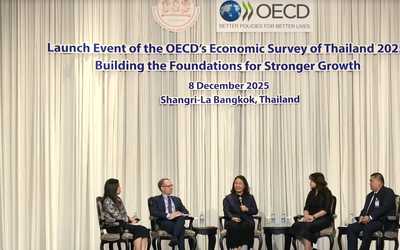Consumption Responses and Redistributive Implications of Luxury Durable Tax Rebates
Abstract
This paper evaluates the impact of tax rebates on luxury durables, using Thailand’s 2011 car tax rebate as a case study. Utilizing a stochastic dynamic model with heterogeneous agents, where cars serve as both luxury goods and illiquid assets, the study finds that the policy effectively boosted consumption by targeting households with a high propensity to spend. However, it was regressive, primarily benefiting high-income households and leading to prolonged negative effects on household spending and saving. Additionally, the policy caused secondhand car prices to drop. This enabled lower-income households to purchase used cars at lower costs, but further prolonged and deepened cuts in non-durable spending and savings. Using the estimated parameters and the interest-rate shocks in the policy experiment, the simulated short-run elasticity of intertemporal substitution for Thailand is low–typically between 0 and 0.1. Wealthier and older households increase spending in response to the rate increase, whereas poorer and younger households tend to boost saving instead.








